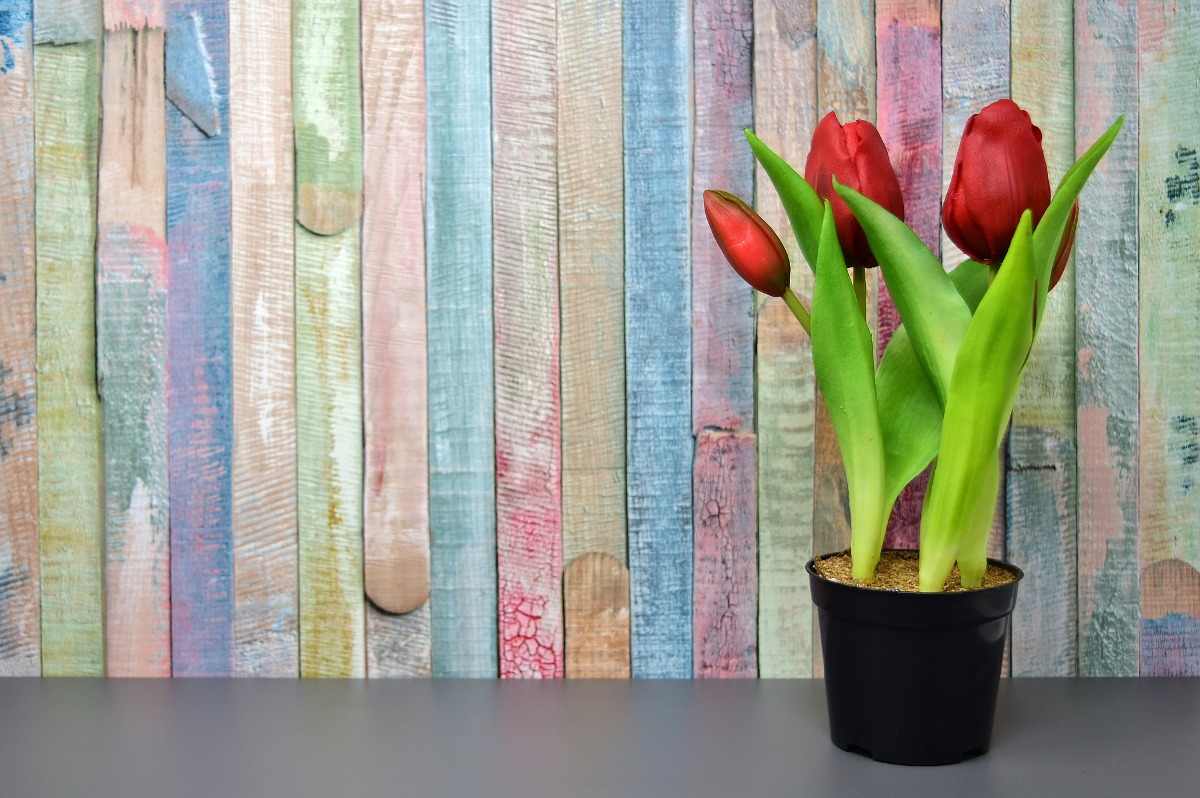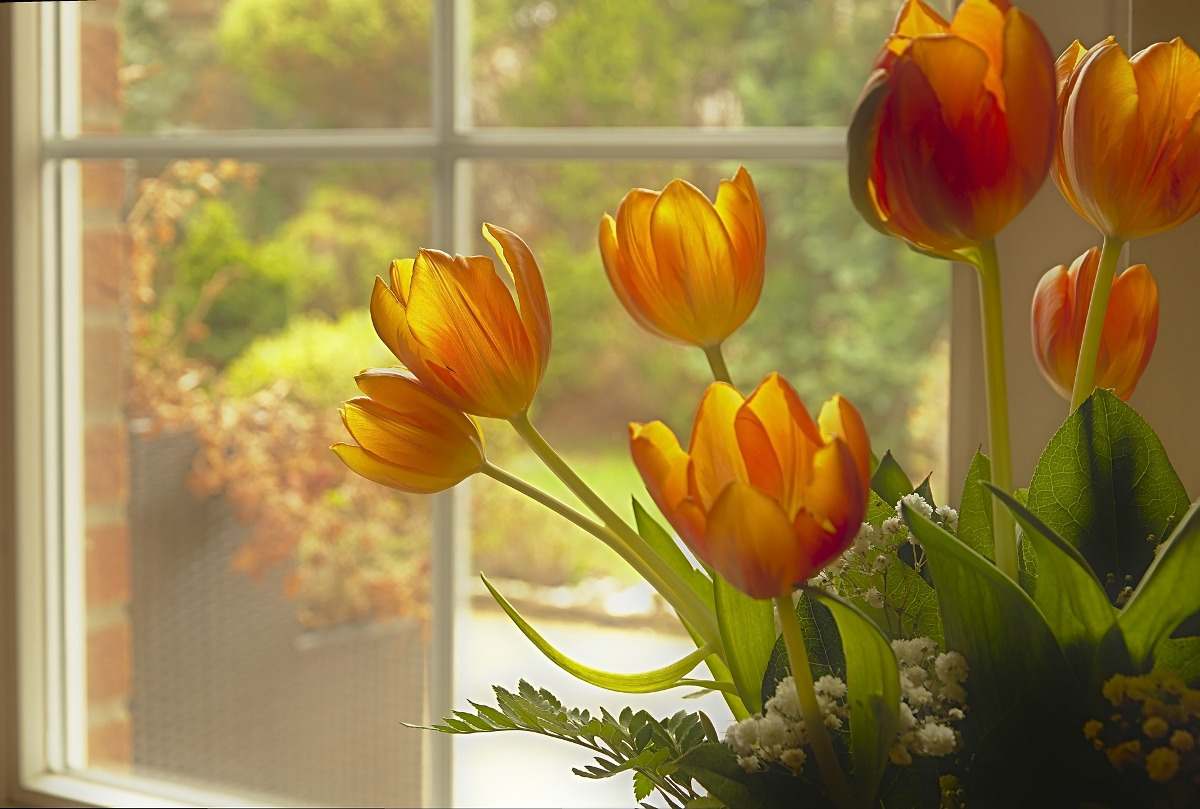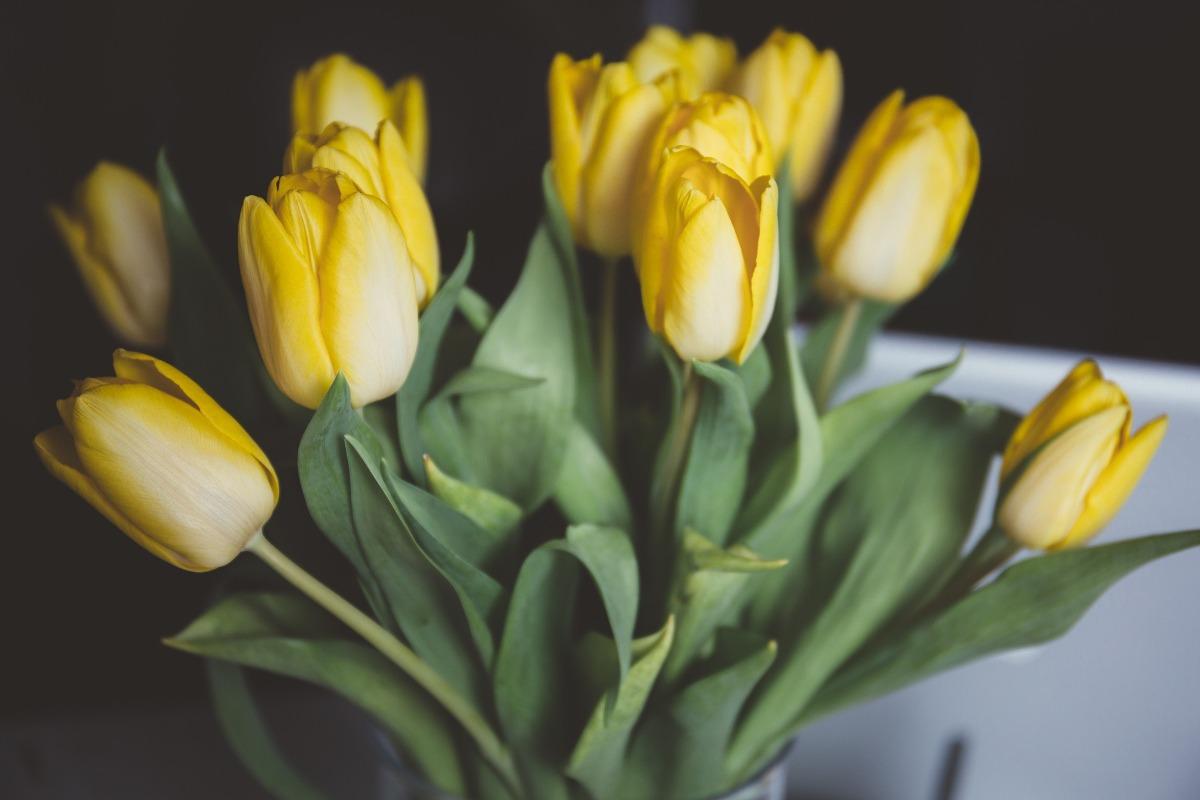Introduction to growing Tulips indoors
Growing Tulips in pots is very easy with a little planning. Growing Tulip bulbs in containers are easy and only need to give the bulbs a drink of water and a place to chill out. The buds are already inside the bulbs. Growing Tulips indoors is called forcing and start by selecting the biggest bulbs you can find. To grow Tulips in pots, you’ll need the right pot, soil, and then approach. In this article we also discuss below topics;
- Growing Tulips indoors in pots
- Tulips plant care
- Tulips growing conditions
- Tulips growing indoors from seed/bulbs
- Gardening Tips for Growing Tulips indoors in pots
- How do you care for potted Tulips
- How do you force Tulips indoors
- Can Tulips survive indoors
A step by step guide to growing Tulips indoors
Make sure soil is well drained
When planting, the important thing is that the soil is well-drained. Add a handful of grit to multi-purpose compost at planting time, small stones or broken pieces of polystyrene plant trays in the base and ensure you have drainage holes in the pot. Stand the pot on feet to stop autumn and winter moisture seeping in upwards from the ground and rotting the Tulip bulbs.
Best Tulips for pots
In deep pots you might go for tall plant varieties such as triumph whose stems grow up to 40cm, flowering in late spring. These contain T. ‘Prinses Irene’, which has glowing orange blooms flamed with purple, and ‘Bing Crosby’, a scarlet variety.
Shorter single early Tulips are ‘Apricot Beauty’ well in pots, as do taller single late and Darwin Tulips such as ‘World’s Favorite’, a hot orange-red type, or the lily-flowered T. ‘Ballerina’, with its vibrant orange flowers open fully on sunny days. Tulips are perfect for pots just avoid those with weak stems and very heavy flowers that are prone to flopping. Many Tulip bulbs grown in pots can be left in the compost if they are kept completely dry during the dormant period in summer.
Best pots for growing Tulips

Use a pot that’s at least 8.5 inches in diameter with drainage holes and your pot should be anywhere from 6.5–18 inches deep. The pot you get must have drainage holes in it. Larger pots will be able to hold more Tulip bulbs, which will make a fuller pot of flowers. You can purchase plastic pots, ceramic pots, or terracotta pots to plant Tulips. An 8.5-inch pot can hold anywhere from 2 to 9 Tulip bulbs. A pot that is 22 inches in diameter will be able to hold approximately 25 medium-sized Tulip bulbs. Drainage holes are very important so that water doesn’t pool on the bottom of the pot and rot the bulbs. Tulip flowers grow best in clay pots, which dry out faster than plastic pots. Select a deeper pot for tall varieties, a shallower one for shorter kinds. Be sure the pots have drainage holes in the bottom and partially fill the pot with moistened soilless potting mix.
When do you plant Tulips indoors?
It’s possible to plant Tulips indoors at any time of the year. It’s important to inspect the bulbs before planting them indoors in pots. Select larger bulbs for indoor plantings as they don’t need time to mature to bloom as smaller bulbs do.
Tulips don’t need very deep pots. They do best in wide clay dishes and they make wonderful decorations for any room in the house. It’s possible to have an indoor Tulip garden by arranging pots decoratively and also according to varieties of Tulip colors. Tulip plants like rich soil best. For indoor Tulips, select a good medium at the base of the pot like sphagnum moss. Then fill the pot with rich, dark potting soil to one-half inch from the top. Place Tulip bulbs in potting soil and then cover with more soil allowing only the tips of the bulbs to show.
Keep the Tulip plants in an area that gets sunlight for at least 6 hours a day. Tulips require sunlight but don’t do well in extremely high temperatures. For this reason, keep them out of direct sunlight during the spring and summer season. If you’re keeping the Tulips inside, place them next to a window so they can get enough sun every day. You can keep pots under the partial shade of a tree or under an awning to keep them out of direct sunlight. The soil in a pot will get hotter than the soil in a yard or garden. Avoid using dark-colored pots, they will absorb the sunlight and increase the soil temperature.
Growing Tulips from bulbs
In case if you miss this: Growing Lotus from Seed, Tubers in Containers.

Step 1) First, collect Tulip bulbs of at least 1 1/2 inches in diameter. Larger, more mature bulbs fare better indoors. Discard any Tulip bulbs that show signs of rot or disease.
Step 2) Fill a planting pot or container with potting soil, stopping once it is three-fourths full.
Step 3) Put a bulb into the container with the pointed end facing up. Match the number of bulbs planted with the size of the container, so that Tulip bulbs have a 1/2-inch space on each side. For example, a pot with a 5-inch diameter can hold 5 bulbs.
Step 4) Cover the bulbs with potting soil, so that only the tips show and water thoroughly.
Step 5) Place the bulbs into cold storage to encourage root growth. Keep containers in the refrigerator or a cold, dark room that reaches no higher than 50F, for 10 to 12 weeks.
Step 6) Move the containers into a cool area of 60 to 65F once sprouts appear. As the shoots grow, gradually introduce the plants to warmer temperature levels and indirect sunlight. Water frequently as the potting soil dries out.
Step 7) Keep the Tulips near a window in a room that reaches 70F to encourage flowering.
How to plant seeds from Tulip pods
Tulips are most grown from bulbs, though they can also be started from seed.
- First, allow the Tulips flowers to fade, and the seed pod to grow and dry. The seed pod is just under the bloom. Once it is dried and brown, then it is ready to be removed from the plant stem.
- Cracks open the dried seed pod and empty the seeds. Then, place the seeds in a plastic bag with a small amount of moistened peat moss. Place the bag in the refrigerator at a temperature of 40Ffor 90 days to simulate winter weather conditions.
- Remove the seeds from cold storage after 90 days and discard any moldy seeds. Fill the bottom of a cold frame with a loamy soil mixed with one-third part sand. Then, sow the seeds on top of the soil, and barely cover them with a dusting of soil. Water the seeds with about an inch of water per week to maintain them moist.
- Leave the Tulips in the cold frame for up to about 18 months from the time they are sown. The seeds will grow into seedlings about 6 to 8 weeks after sowing. Plant the seedlings outdoors the following fall in a well-draining composted soil.
Plant Tulips in containers
Step 1) First, fill a pot two-thirds full with moist potting soil. Use a pot with a bottom drainage hole so excess moisture can drain.
Step 2) Place the bulbs on top of the soil with their pointed end facing up. Adjust the soil depth so the tips of the bulbs sit about 4 inches beneath the pot rim. The number of bulbs you need depends on the pot size, but you can space the bulbs about one inch apart in all directions.
Step 3) Add soil to the pot until the surface is 1 inch below the pot rim and the bulbs are planted about three inches deep. Then, water the soil until the excess moisture begins to drain out of the bottom.
Step 4) Set the pot in an area that receives at least 6 hours of direct sunlight daily. Water fall-planted containers lightly so the soil doesn’t dry totally during winter, then begin spring watering when the first growth appears.
Step 5) Fertilize the Tulips once the flower buds begin to appear. Apply a slow-release fertilizer formulated for bulbs, using the amount recommended on the package.
Step 6) Cut off the dead flowers as they fade and remove the foliage only after it yellows and goes dormant in early summer.
Growing Tulips indoors in water
For an interesting twist on growing Tulips indoors, why not try growing Tulips in the water? As before, the Tulip bulbs should be chilled for several weeks before planting. Select a small glass vase that you can partly fill with glass beads or small stones, or you can buy a special forcing vase. The bulb should sit in the neck of the vase with just its roots touching the water to keep the water level about 1 inch below the base of the bulb. Keep in a cool dark place for 4 to 6 weeks and when a shoot appears, move to a bright, warm spot where the Tulip will bloom.
Water the soil once the bulbs are planted and water the soil thoroughly once you have planted the bulbs. Excess water must drain out of the drainage holes on the bottom of your pot. If you are keeping the bulbs inside you’ll have to water them approximately 2 to 3 times per week. If you are keeping the bulbs outside and there is regular rainfall, you don’t have to water them. If there is a drought, water them 2 to 3 times per week.
Water the Tulips when the top about 1 inch of soil is dry. You’ll want to water the soil regularly to make sure that it’s moist, but not soggy. To check this, occasionally poke finger 1 inch into the soil and water the soil if it’s dry. If you are keeping the pots outside, only water the bulbs if it doesn’t rain for over a week. Continue watering the bulbs during the dormancy phase.
Remove any fallen petals or leaves of Tulips
Let the petals and leaves on the Tulips turn yellow color for 6 weeks before plucking them from the flower. If the leaves fall off, remove them from the pot to prevent rot to the rest of the bulb. Then, removing dead petals will encourage the Tulips to bloom again the next year.
Tulips plant care
Discard any Tulips that develop diseases or infested with pests. If the Tulips are stunted in growth or exhibit brown or yellow patches over them, it’s likely they have a disease or can be infested with pests like nematodes. To prevent the disease from spreading, dig up the Tulip bulbs of any Tulips that exhibit these signs of sickness, and throw them away.
Prevent squirrels and other animals from eating Tulips by keeping them indoors, putting a wire mesh over the soil, or fencing them in. Common Tulip diseases are basal rot, root rot, and Tulip fire, a fungal disease. Do not plant Tulip bulbs that have a white fungus on them, because it can spread and hurt the rest of the Tulips in the pot.
Check for blights and diseases affected in Tulips. Blight creates brown specks on the plant leaves and turns the flower grey in color. If any of the bulbs are diseased, dig them up and throw them away to prevent it from spreading to other Tulips. If only part of the plant is damaged, and cut it off to see if you can salvage the plant. The only thing you can do to prevent disease is to adequately care for Tulips. You can make sure they get a modicum of moisture, a little bit of shade, and are planted in decent, slightly acidic soil. Aphids can be a problem, but they’re handled with water spray.
Commonly asked questions about growing Tulips indoors
You may also check this: Organic Terrace Gardening.

Do Tulips do well in pots?
Tulips are perfect for pots just avoid those with weak stems and very heavy flowers that are prone to flopping.
Do potted Tulips need sunlight?
The Tulips prefer well-drained sites where the water is not left standing. You can plant Tulips in partial shade, though they do best in spots that get full sunlight for the better part of the day. Ideally, the Tulip flowers shouldn’t receive the full brunt of the sun during the hottest part of the day.
Why are my potted Tulips dying?
Bad drainage or overwatering can lead to fungal diseases are root rot, which will destroy the roots and bulb, causing the plant to wilt. Select pots with drainage holes, and water only when the top inch or so of the soil feels dry to the touch.
Why are my Tulips turning brown?
Without an inch of moisture per week from a combination of rainfall and supplemental watering, bulbs begin to dry out beneath the soil. You may not have a clue until the plant leaves start to turn yellow. If you dig down next to a bulb and then find the soil dusty, water immediately.
How often should potted Tulips be watered?
Provide water the Tulip plants until moisture drips from the bottom of the pot. Allow the pot to drain for 30 minutes, and empty the collected moisture from the drip tray beneath the pot. Indoor plants require once or twice weekly watering, while outdoor pots may need watering as often as once daily.
Why are my Tulips turning purple?
When you notice a plant with purple leaves rather than the normal green color, it is mostly due to a phosphorus deficiency. If the soil is cool early in the growing season, a phosphorus deficiency can develop in some plants.
How many years will a Tulip bulb bloom?
Tulip bulbs are classified as early and mid-season Tulips. Bloom times will depend on location and the weather but, as a rule, early Tulips will bloom from March to April and mid-season types will extend the blooming period later into spring. If the weather is cool, Tulips may last 1 to 2 weeks.
In case if you are interested in How to Make Money from Dried Flower Business.